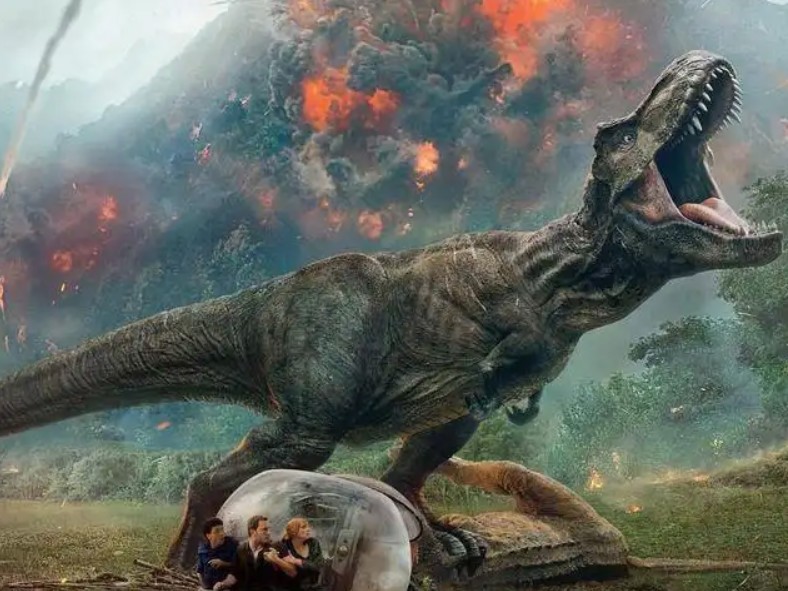恐龙控制地球长达1.6亿年之久,然后却忽然在地球上消失。对于这些霸主如何灭绝,科学界有小行星碰击、温度骤降、大气改变等多种假说。
最新发表在顶级学术期刊《自然》(Nature)上的一项研讨,以小行星碰击说为根底,在恐龙完结的时刻点上给出更精确的定论,即完结恐龙时代(中生代)的希克苏鲁伯小行星碰击事情产生于北半球的春天。
Dinosaurs controlled the earth for 160 million years, and then suddenly disappeared from the earth. As for how these overlords went extinct, the scientific community has various hypotheses such as asteroid collision, temperature drop, and atmospheric changes.
A new study published in the top academic journal "Nature" (Nature), based on the theory of asteroid impact, gives a more accurate conclusion at the time of the end of dinosaurs, that is, the end of the dinosaur era (Mesozoic) hope. The Cthulub asteroid collision happened in the spring of the northern hemisphere.
The research was jointly completed by researchers from the Vrije Universiteit Amsterdam in the Netherlands, Uppsala University in Sweden, the European Synchrotron Radiation Facility (ESRF), the Royal Belgian Institute of Natural Sciences, and the Vrije Universiteit Brussel. The authors say that about 66 million years ago, a huge asteroid slammed into what is now Mexico's Yucatan Peninsula, causing a mass extinction that killed 76 percent of Earth's species, including non-avian dinosaurs, winged Dragons and Ammonites.
However, so far, workshops on the moment of this event have focused on the millennium scale, so the timing of the impact is unknown.
MelanieDuring digs up a spoonnose sturgeon in Tanix sediments.
To address this question, Melanie During and colleagues at Uppsala University studied the remains of filter-feeding sturgeon-shaped fish (sturgeons and sturgeons) that died collectively that day. Unique three-dimensional growth patterns can be seen in the well-preserved fossils, providing a record of the changing seasons. Combined with carbon isotope data, these results suggest that the fish died in the northern hemisphere spring.
For X-ray fluorescence analysis performed at the University of Brussels, bone slices excised in epoxy resin were placed on glass spheres.
These fish are found in Late Cretaceous sediments in North Dakota, USA. They had impact debris in their gills, but did not deepen their digestive systems, indicating that they died almost instantly in a sudden surging upstream of a river caused by a lakequake (land water roaring under the impact) triggered by a single impact.
A sturgeon from the Tanis Channel, before being scanned by the European Synchrotron Radiation Facility (ESRF). The right beak is missing, as is the part behind the left shoulder fin.
The authors believe that the calamity occurred in spring, a sensitive period for many northern hemisphere species to reproduce and nurse their offspring. Ecosystems in the southern hemisphere were in a period of fall stagnation, they said, and have since recovered nearly twice as fast as in the northern hemisphere. The study believes that the discovery helps explain subsequent extinction patterns and improves understanding of this critical moment in Earth's history.
研讨由荷兰阿姆斯特丹自由大学、瑞典乌普萨拉大学、欧洲同步辐射设施(ESRF)、比利时皇家自然科学研讨所、布鲁塞尔自由大学等团队的研讨人员联合完结。作者们说到,大约6600万年前,一颗巨大小行星撞上了现在墨西哥的尤卡坦半岛,造成了一场杀死76%地球物种的大灭绝,连累的生物包含非鸟恐龙、翼龙和菊石。
然而,迄今为止,对这一事情产生时刻的研讨会集在千年尺度上,因而碰击产生的时节未知。
MelanieDuring在Tanix沉积物中挖掘一条匙吻鲟。
为解决这一问题,乌普萨拉大学的Melanie During及其同事研讨了当天团体逝世的滤食性鲟形鱼类(鲟科和匙吻鲟科)的遗骸。在保存完好的化石里可见独特的三维成长形式,供给了时节改变的记载。结合碳同位素数据,这些结果标明这些鱼死于北半球的春季。
在布鲁塞尔大学进行的X光荧光分析,环氧树脂中切下的骨骼切片被放置于玻璃球上。
这些鱼类发现于美国北达科他州的白垩纪晚期沉积层。它们的鳃里有碰击碎片,但没有深化消化系统,标明其在一次碰击引发的湖震(陆地水在冲击下轰动)所导致的河流上游忽然涌动中简直当即逝世。
来自Tanis河道一条匙吻鲟,在欧洲同步辐射装置(ESRF)进行扫描前。右边的喙不见了,左边肩鳍后面的部分也没有了。
作者们以为,这一灾祸产生时是春季,恰好是许多北半球物种在春季繁衍和哺育子孙的敏感阶段。他们说到,南半球生态系统则正处于秋季停滞时期,后来的康复速度挨近北半球的两倍。研讨以为,这项发现有助于解说后续的灭绝形式,增进了对地球历史这一关键时刻的理解。
